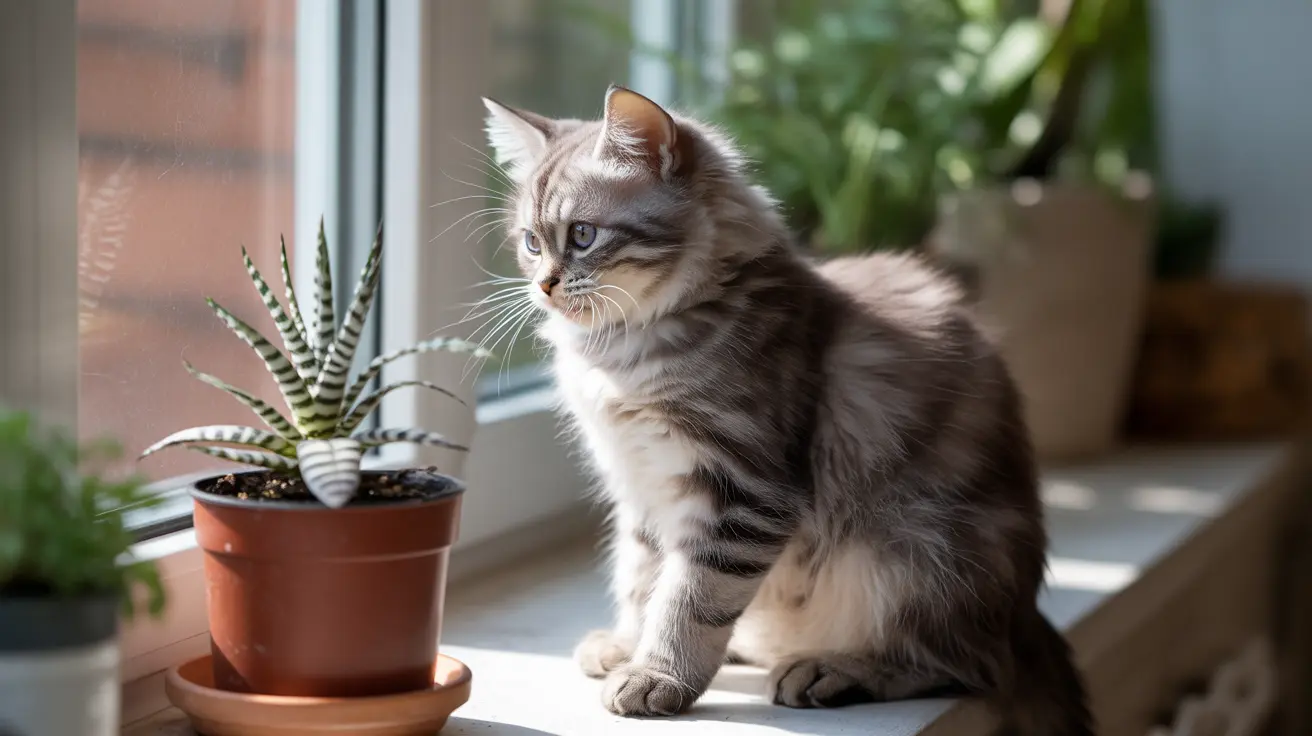Understanding Zebra Plants and Cat Safety
If you're a cat owner considering adding some greenery to your home, you might be wondering whether zebra plants (Haworthia species) are toxic to cats. The good news is that these striking succulents are officially recognized as non-toxic to cats by major veterinary authorities, including the ASPCA.
Zebra plants, with their distinctive white stripes and compact growth habit, have become increasingly popular houseplants. Unlike some similar-looking succulents like aloe vera, these hardy plants pose no poisoning risk to your feline friends.
Identifying True Zebra Plants (Haworthia)
Zebra plants belong to the Haworthia genus, with the most common varieties being Haworthiopsis attenuata and Haworthia fasciata. These small succulents feature:
- Thick, pointed leaves arranged in rosettes
- Distinctive white horizontal stripes
- Compact growth rarely exceeding 6 inches in height
- Dark green base color with raised white tubercles
Safety Profile and Scientific Evidence
Multiple veterinary sources confirm that zebra plants contain no toxic compounds that could harm cats. Unlike toxic succulents such as aloe vera or jade plants, Haworthia species don't produce dangerous saponins or anthraquinones.
However, while non-toxic, excessive consumption might cause mild digestive upset simply due to the plant's fibrous nature. This is true of any non-food plant material a cat might consume.
Signs of Plant Consumption in Cats
Though zebra plants aren't toxic, it's still important to monitor your cat if they show interest in the plant. Watch for:
- Mild stomach upset
- Temporary changes in appetite
- Vomiting (rarely)
- Diarrhea (uncommonly)
Prevention and Plant Placement
Even with non-toxic plants, it's best to prevent excessive chewing or plant damage. Consider these strategies:
- Place plants on high shelves or hanging baskets
- Use pet deterrent sprays around plant areas
- Provide cat grass as an alternative
- Keep plants in rooms cats don't frequently access
When to Contact Your Veterinarian
While zebra plants are safe, contact your vet if your cat shows persistent symptoms after plant consumption, such as:
- Prolonged vomiting or diarrhea
- Significant lethargy
- Decreased appetite lasting more than 24 hours
- Difficulty breathing or swallowing
Frequently Asked Questions
Is the zebra plant (Haworthia) safe for cats to be around and non-toxic if ingested?
Yes, zebra plants (Haworthia species) are completely non-toxic to cats according to the ASPCA and other veterinary authorities. They can be safely kept in homes with cats.
What symptoms might my cat show if it chews on or eats parts of a zebra plant?
While non-toxic, cats might experience mild digestive upset if they consume large amounts of the plant. Symptoms are usually minimal but could include temporary stomach discomfort or soft stools.
How can I tell the difference between a non-toxic zebra plant and a toxic aloe vera plant that looks similar?
Zebra plants are smaller, with shorter leaves and distinctive white horizontal stripes. Aloe vera plants are larger, with longer, fleshier leaves and typically lack the pronounced striping pattern.
What should I do if my cat eats a large amount of zebra plant and seems unwell?
Monitor your cat for signs of digestive upset. While serious complications are unlikely, contact your veterinarian if symptoms persist beyond 24 hours or if your cat shows signs of distress.
How can I protect my cats from chewing on zebra plants while still keeping them indoors?
Place plants in elevated locations, use pet deterrent sprays, provide cat grass as an alternative, and ensure your cats have plenty of environmental enrichment to prevent boredom-based plant chewing.
Conclusion
Zebra plants offer a safe, attractive option for cat owners looking to add succulents to their home décor. While these plants won't harm your cats if ingested, it's still best to monitor plant interactions and take simple precautions to prevent excessive consumption.






